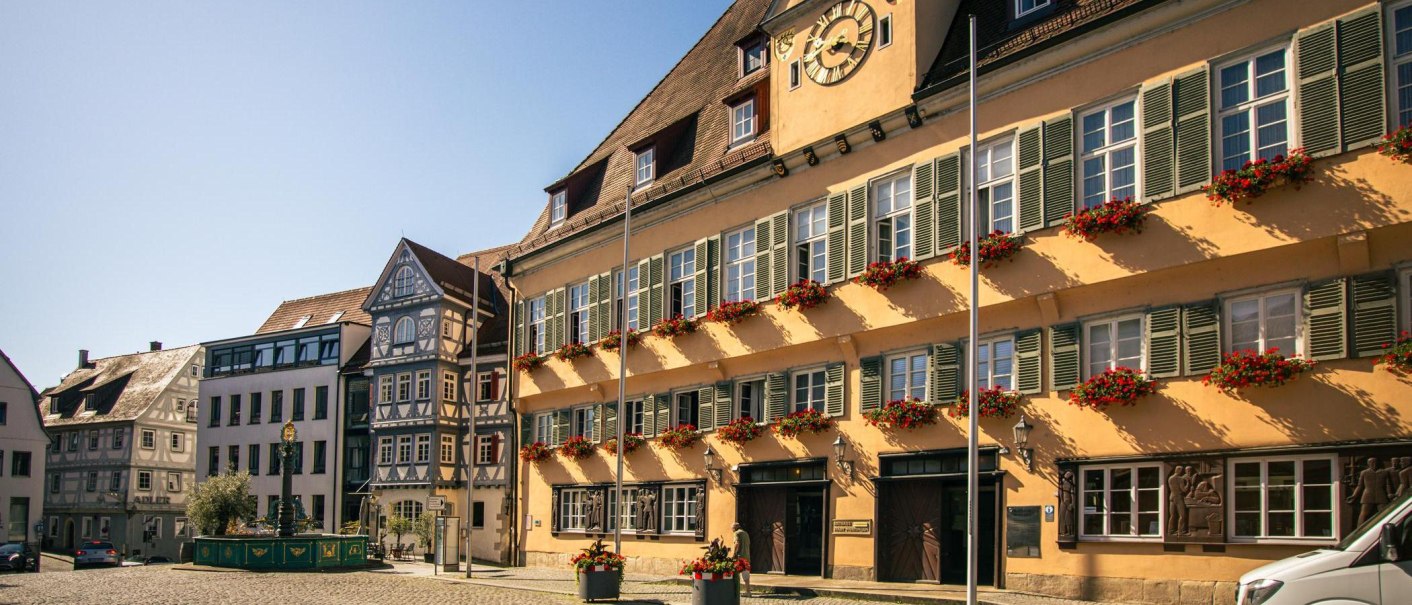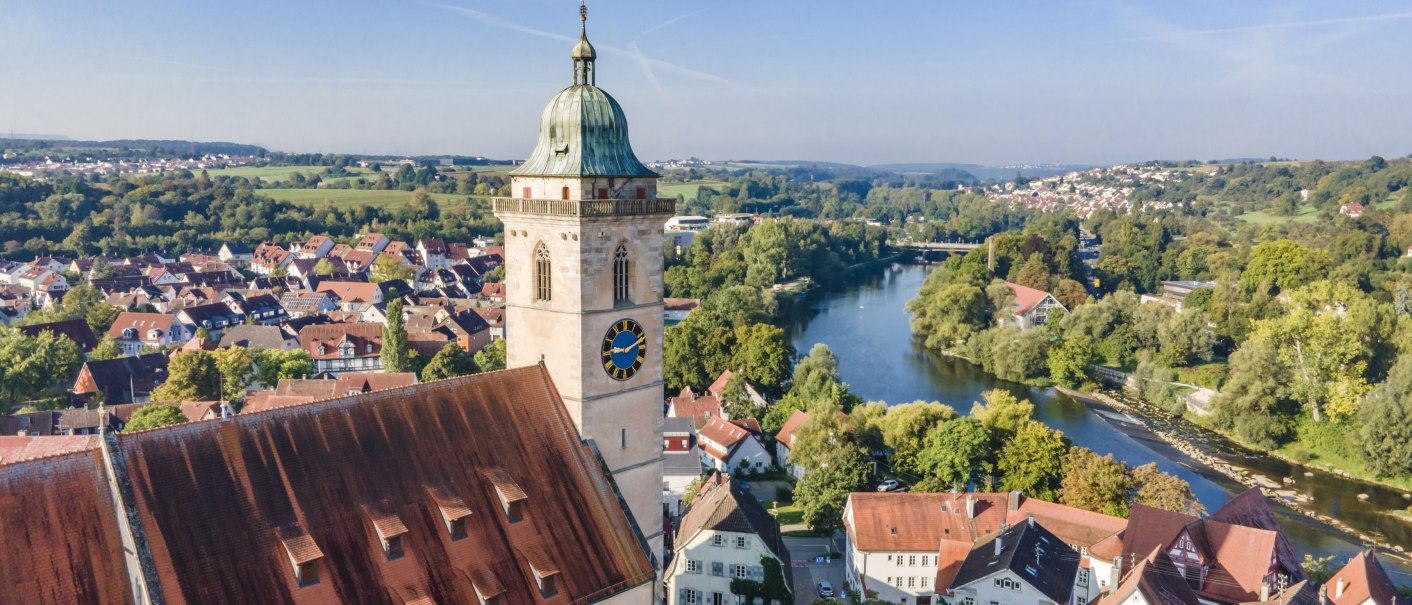Nürtingen
The location of the old town centre of Nürtingen on the spur of a hill overlooking the Neckar Valley, with a far-reaching view over the surrounding countryside and a dominant position over the Neckar crossing, indicates that the original site was of strategic importance. Celts and Romans left their mark on this city on the Neckar, as did famous writers and artists.
The views of the town and its surrounding scenery are defined by the Neckar, the natural orchards of the foothills of the Swabian Alb and the impressive Alb escarpment. The delightful countryside round about Nürtingen can be explored at a leisurely pace via countless hiking and cycle trails and the Neckar Valley cycle route.
In addition, Nürtingen is located right in the heart of a region with one of the strongest economies in Europe. The state capital of Stuttgart and the towns of Tübingen, Reutlingen and Göppingen are only a few minutes' journey away by car or train. A direct link to the A8 Karlsruhe-Stuttgart-Munich motorway, the proximity to Stuttgart International Airport and the New Trade Fair Centre make Nürtingen an attractive destination for day tourists and businessmen alike.
History
From what we know of the pre- and early history of the area, there were in the Middle Ages several Alemannic settlements where Nürtingen now stands. An imperial document from the year 1046 bears witness to the existence of a "curtis Niuritingen", a manor estate which had been in Salian possession since around 1024. The process of the town's foundation was completed by about 1335. Historically speaking, the founding and fortification of Nürtingen constituted part of the House of Württemberg's territorial acquisition of power. The castle, first documented in the year 1327 and demolished in the second half of the 18th century, was the dowager residence of the court of Württemberg between 1421 and 1698; its exterior appearance, too, underlined the close link between the town and the local rulers: the mighty wings of the structure, along with the adjacent Laurentiuskirche (St. Laurence's Church), occupied the whole of the castle hill, towering over the Neckar Valley, and dominate old portrayals of the town. Important civic institutions - the town hall, Latin School, hospital - were built in the 15th and 16th centuries, protected by the fortifications of the town and the castle.
The town hall in the Marktstraße (built 1476/77) was closely linked to the markets held there.
The former Latin School, along with the two buildings which originally housed the administration and town clerk's chambers, formed a Late Baroque ensemble on the south side of the Laurentiuskirche. Prior to the Reformation this used to be the site of the St. Leonhard's prebendary, whose income passed over to the Latin School in 1536.
The Nürtingen Latin School was documented as early as 1481 and was one of most prominent Latin schools in Württemberg. It owed its excellent reputation to the many outstanding academics among its masters; its pupils included Philipp Matthäus Hahn, Friedrich Hölderlin and Friedrich Wilhelm Joseph von Schelling.
Another purely civic foundation was the Nürtingen hospital (1526). It carried on the medieval Christian hospital tradition with a variety of sociopolitical services and attained the rank of the wealthiest public foundation in Württemberg, thanks to its efficacious financial and capital policies.
The administration of the hospital and that of the town were closely linked. The building on the Neckarsteige was rebuilt in 1750 following the great city fire and now houses the technical college.
The Baumwollspinnerei Otto (cotton mill) - one of the first industrial companies in Württemberg - started production in Nürtingen in 1816. The founding of a trade association (1856), a tradesmen's bank (1863), a gasworks (1864) and the building of the Plochingen-Reutlingen railway line (1859) paved the way for industrialisation. From 1884 onwards Nürtingen became the "city of knitwear". At around the same time the first metal, wood and cork industries were established. For about a century (from 1872 onwards) the cement works gave the town its familiar grey rooftops.
In 1972 the districts of Nürtingen and Esslingen were amalgamated. In the course of the 1973/74 district reforms, the neighbouring communities of Hardt, Neckarhausen, Raidwangen, Reudern and Zizishausen were incorporated. Oberensingen had already belonged to Nürtingen since 1919. In 1996 the city on the Neckar celebrated its 950th anniversary.






